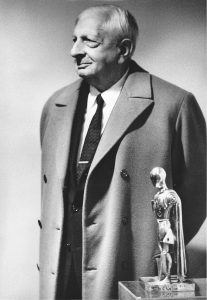Art Appreciation August 2020

The pictures I have chosen are mainly by Giorgio De Chirico whose early works painted in the early 20th century, strongly influenced the surrealists such as Magritte and Dali. I was reminded of his art during the strictest period of lockdown, when I saw film of Exeter and other usually bustling city centres totally deserted. De Chirico’s early pictures show classical city architecture such as piazzas and arcades, sometimes with statues. The landscape is inhabited by anonymous and mysterious human figures. The effect is eerie and disquieting. The woman on the right in Piazza with Apollo and Ariadne, with her head and hands projecting out of the windows, seems to me to convey the isolation felt by many people effectively imprisoned in their homes. The Enigma of the Hour has the same uneasy feeling. The solitary figure and the clock give an idea of time hanging heavy and the anxious waiting for something to happen. The third picture has the sad image of a child playing alone and the disturbing shadow suggests something vaguely sinister lurking round the corner.
In these pictures, which De Chirico described as Metaphysical art, we see the faces of the classical statues, but the human figures are all pretty anonymous with no facial details. Most are just silhouettes dwarfed by the scale of the buildings. In a similar way, Magritte shows his Lovers with their faces completely covered by cloth veils. It may be a comment on love being blind, but it chimes in with the recent pandemic rulings which have separated loved ones and forced us to hide our identities behind masks.
De Chirico was born in Greece to Italian parents, which accounts for the classical style architecture in his Metaphysical paintings. His father was a railway engineer and in many of his pictures you will spot a tiny steam train somewhere in the background! In the late 1920s his relationship with his Surrealist followers deteriorated and he disassociated himself from them and condemned modern art in general. In 1939 he changed his style of painting to one which was influenced by Rubens and is described as neo- Baroque. It was a cause of much resentment to him that these later works did not meet with the critical acclaim as those of his Metaphysical period.
I hope you find these pictures interesting, and I will be interested in hearing your thoughts about them.
Best wishes – Lynne Vick
